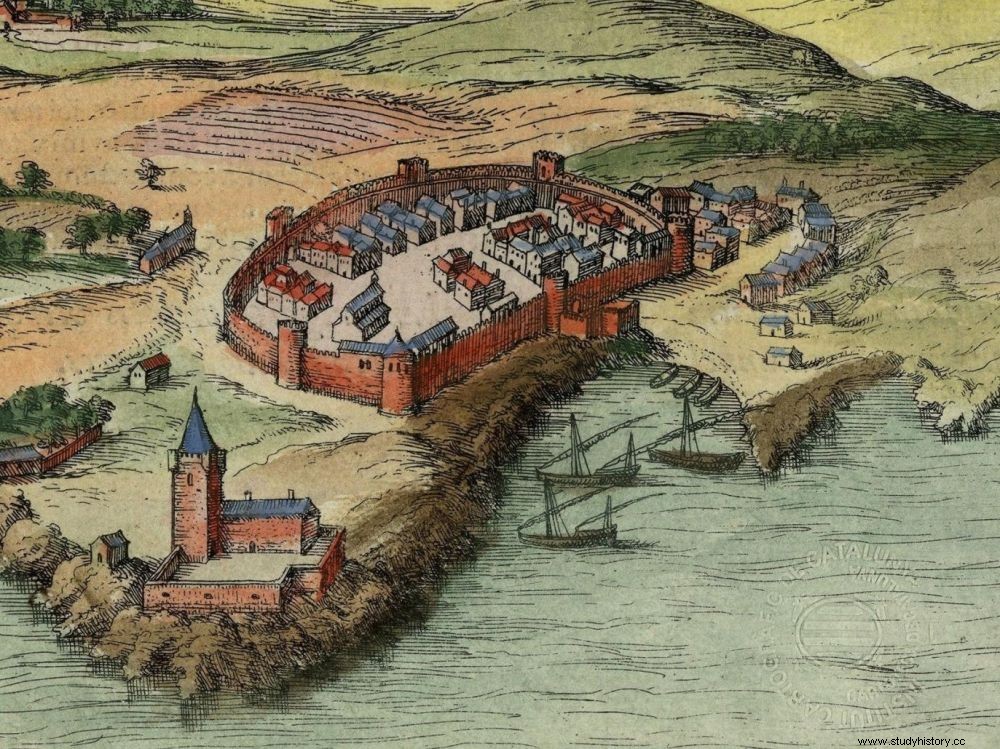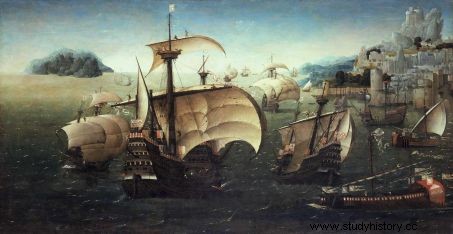In Portugal, a 9-gun ship that once sailed the route to India was found at the bottom of the Tagus. A new discovery for 20 years.

1572 engraving depicting the port of Cascais, Portugal.
The wreck of a Portuguese vessel that sailed along the spice route to India, and which is believed to have been shipwrecked between 1575 and 1625, has been discovered at the bottom of the Tagus, near Lisbon. This was announced by the authorities of Cascais (coastal town near Lisbon), where the ship was found.
"The most important archaeological find in Portugal since 1994"
"This is the most important archaeological find made in Portugal since 1994" , the date of the discovery in the same region of a ship from the beginning of the 17th century, declared to AFP Jorge Freire, director of the maritime archeology project launched in 2005 by the town hall of Cascais, a municipality in the western suburbs of Lisbon.
WAR AND TRADE. In both cases, they were ships, called "nau" in Portuguese, larger than the caravels that preceded them and which served both as a warship and a merchant vessel.

Painting from 1540 representing several Portuguese "naus", ships dedicated to trade and war / Public Domain
Laden with pepper, the ship was arriving in Lisbon when it sank
Found on September 3, 2018 at 12 meters deep, the remains are spread over an area 100 meters long and 50 meters wide, said the town hall of Cascais in a press release. The ship contained nine bronze cannons bearing the coat of arms of Portugal, Chinese porcelain from the Wanli period (1573-1619), pepper or even shells that were used as currency in the slave trade.
SPICES. "The fact that it contains pepper is very important, because it tells us that the ship was arriving in Lisbon when it sank", explained Jorge Freire. "The mouth of the Tagus is the gateway to Lisbon and there is a large concentration of wrecks there, with at least a hundred shipwrecks recorded since the 17th century" , said the archaeologist.
S.S. with AFP
